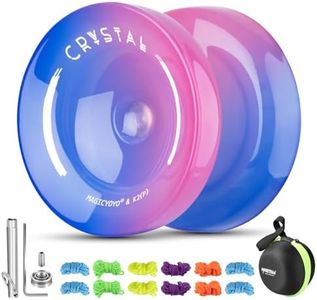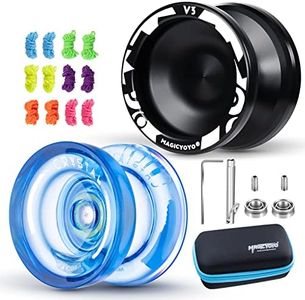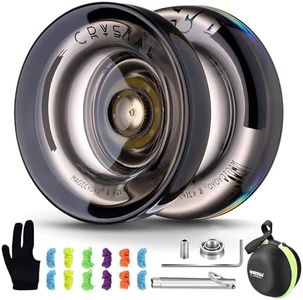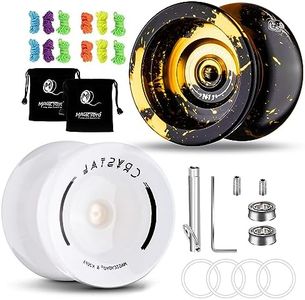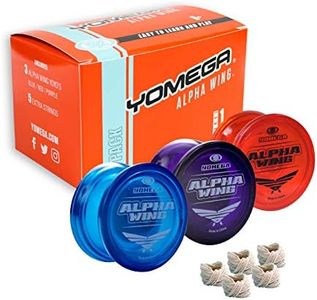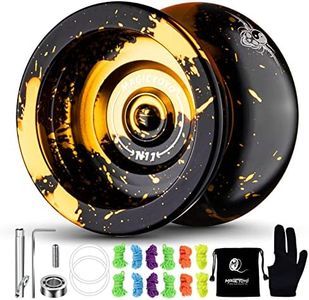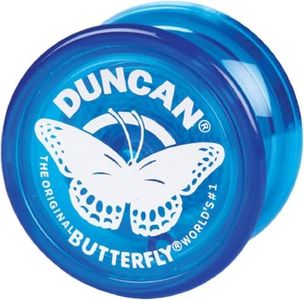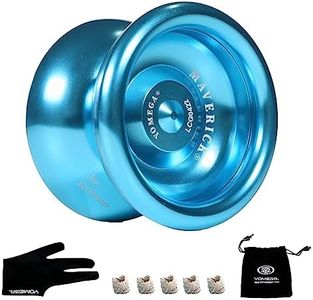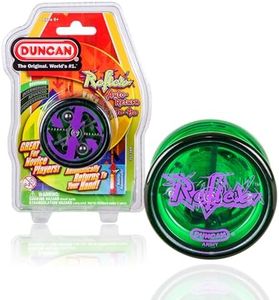We Use CookiesWe use cookies to enhance the security, performance,
functionality and for analytical and promotional activities. By continuing to browse this site you
are agreeing to our privacy policy
10 Best Beginner Yoyo For Kids
From leading brands and best sellers available on the web.Buying Guide for the Best Beginner Yoyo For Kids
When selecting a beginner yoyo for kids, it's important to focus on models that are easy to use, safe, and help children develop basic skills without frustration. Instead of looking for the most advanced features, prioritize yoyos that promote learning and enjoyment. Understanding the key specifications will make it much easier to choose the right yoyo tailored to your child's age, skill level, and interests.ShapeThe shape of a yoyo greatly affects how easy it is for a beginner to catch and control. Basic shapes include butterfly (wide), classic (rounded), and modified (between both). Butterfly shapes are best for beginners, as their wide catching area makes it easier to land on the string and practice tricks, while classic or modified shapes can be trickier but sometimes provide a more responsive feel for basic up-and-down play. For kids just starting out, choosing a butterfly shape is usually easiest and most forgiving.
Response SystemThe response system determines how the yoyo returns to the hand when you tug the string. For beginners, 'responsive' yoyos are ideal because they return quickly with a simple pull, helping kids learn without frustration. Unresponsive yoyos, which require a special 'bind' technique to return, are more suited to advanced players. Always go for a responsive yoyo for young kids and beginners, as it makes learning fun and straightforward.
MaterialYoyos are commonly made from plastic, metal, or a combination of both. For beginners, especially children, plastic yoyos are preferred because they are lightweight, durable, and less likely to get damaged from drops. Metal yoyos are heavier and provide more spin time, but they're also more expensive and can hurt more if dropped. Stick with plastic for young kids to ensure safety and comfort as they learn.
Size and WeightThe physical size and weight of a yoyo impact how easy it is for a child to handle. Smaller, lighter yoyos are easier for small hands to control and less tiring to use over time. However, if the yoyo is too light, it can be difficult to perform tricks. For young beginners, prioritize yoyos that are clearly labeled as child-friendly in size and are not too heavy to avoid discouragement or injury.
Axle TypeThe axle is the part that the yoyo spins around. Beginner yoyos often use a fixed or transaxle (like a plastic sleeve) system, which makes them spin smoothly and return easily. Ball bearing axles allow longer spins, but for very beginners, a simple transaxle can help focus on fundamentals before moving on to advanced tricks. Choose an axle type that is low-maintenance and suited for basic play at first.
String TypeWhile it might seem minor, the string type matters since it touches the child's hands and impacts performance. Cotton strings are soft and good for absolute beginners, while polyester strings are more durable but can be a bit rougher. For kids, choose strings recommended for their age and sensitivity, and make sure they're easy to replace as kids learn and play.
